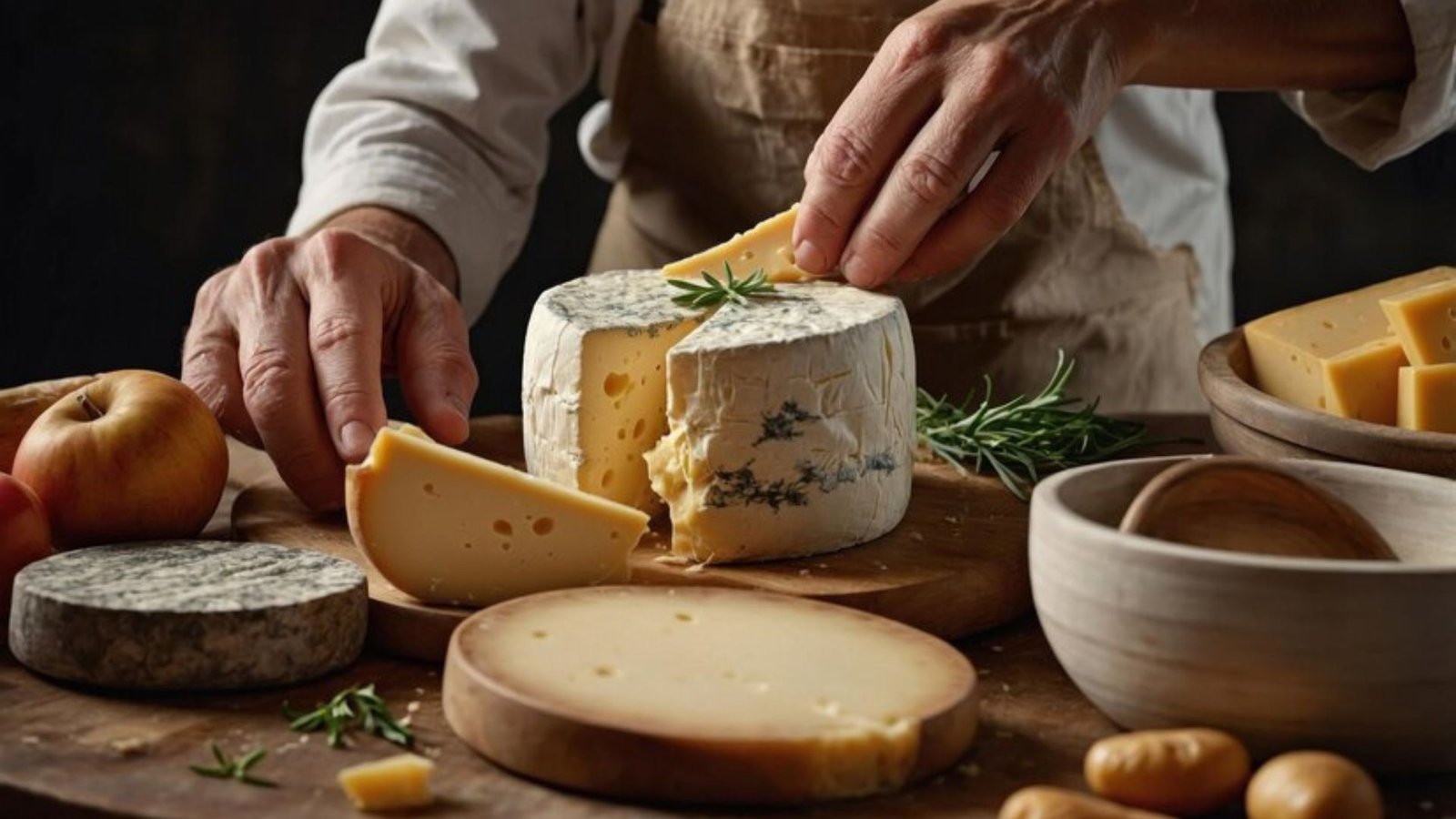Cheese has been a beloved food for centuries, celebrated for its variety, flavor, and cultural significance. One of the key figures in the world of cheese is the cheese monger — an expert who curates, selects, and advises customers on the finest artisan cheeses available. This article will guide you through the world of cheese mongers, explore what they do, and help you discover the best artisan cheeses for your taste. Whether you’re a cheese enthusiast or a curious beginner, this guide will equip you with everything you need to know about finding and enjoying the best cheeses.
What is a Cheese Monger?
A cheese monger is a professional who specializes in selecting, selling, and serving cheese. These experts often work in specialty cheese shops, markets, or gourmet food stores, providing detailed knowledge about various cheese types, production methods, and flavor profiles. They assist customers in choosing the perfect cheese for their needs, whether it’s for a wine pairing, a charcuterie board, or simply to enjoy as a snack.
Cheese mongers often undergo extensive training to gain knowledge about different cheese varieties, including their origins, production techniques, and maturation processes. Their expertise also extends to understanding how to store and serve cheese properly, ensuring that customers enjoy the full depth of flavor and texture that artisan cheeses offer.
The Role of a Cheese Monger
The role of a cheese monger goes beyond just selling cheese. They act as both educators and curators. Their responsibilities often include:
Curating the Selection: Cheese mongers handpick the cheeses they sell, often working directly with artisan cheese producers and farms to source high-quality products.
Advising Customers: Cheese mongers guide customers through their choices, explaining the characteristics of different cheeses, how they’re made, and how to serve them.
Cheese Pairing: An important part of the cheese monger’s expertise is advising on cheese pairings. Whether it’s pairing cheese with wine, bread, fruits, or charcuterie, they offer suggestions that enhance the tasting experience.
Aging and Storing: Some cheese mongers are involved in aging (affinage) cheeses themselves, overseeing the maturation process to achieve the best flavor profiles.
What Makes Artisan Cheese Unique?
Artisan cheeses are handcrafted products made using traditional methods and high-quality ingredients. Unlike mass-produced cheese, which often focuses on consistency and cost-effectiveness, artisan cheeses prioritize flavor, texture, and authenticity. Here are some of the features that make artisan cheese unique:
Quality Ingredients: Artisan cheesemakers use high-quality milk, often from local farms. This milk can come from cows, goats, sheep, or even buffalo, each offering distinct flavor profiles.
Traditional Methods: Artisan cheese production involves traditional, time-honored techniques that often require more hands-on attention than industrial methods.
Unique Flavors: Due to variations in milk, aging processes, and the cheesemaker’s techniques, artisan cheeses offer a broad range of flavors, from tangy and sharp to creamy and mild.
Small Batches: Many artisan cheeses are made in small batches, allowing cheesemakers to focus on quality and experiment with different flavor profiles.
Types of Artisan Cheese
There are thousands of varieties of cheese worldwide, but they are generally categorized by texture, flavor, and the type of milk used. Below are some popular types of artisan cheeses:
Soft Cheese
Soft cheeses are creamy and spreadable, often with a mild to tangy flavor. They are typically aged for a short time, which gives them a fresh, delicate taste. Examples include:
Brie: A soft, creamy cheese with a white rind, known for its mild, buttery flavor.
Camembert: Similar to Brie, but with a slightly stronger, earthy taste.
Goat Cheese (Chèvre): Tangy and slightly crumbly, this cheese is made from goat’s milk and can range from mild to intense.
Semi-Soft Cheese
Semi-soft cheeses have a smooth texture but hold their shape well. They are known for their balance of creaminess and firm structure. Examples include:
Havarti: A Danish cheese with a mild, buttery flavor and a smooth texture.
Fontina: An Italian cheese with a rich, nutty flavor and a slightly springy texture.
Hard Cheese
Hard cheeses are aged for a longer period, resulting in firm textures and concentrated flavors. These cheeses are often sharp, nutty, or salty. Examples include:
Parmesan (Parmigiano-Reggiano): A famous Italian cheese with a rich, salty, and nutty flavor, often grated over dishes.
Cheddar: One of the most popular cheeses worldwide, cheddar varies in sharpness depending on its aging process.
Blue Cheese
Blue cheeses are characterized by the presence of blue or green mold veins, which add a distinct tangy flavor. Examples include:
Roquefort: A French blue cheese made from sheep’s milk, known for its strong, tangy taste.
Gorgonzola: An Italian blue cheese with a creamy texture and a robust, earthy flavor.
The Importance of Pairing Cheese
Pairing cheese with other foods can elevate your tasting experience by complementing or contrasting flavors. Cheese mongers are experts in helping you select the right accompaniments for each type of cheese. Here are some common pairings:
Wine and Cheese
Wine and cheese are classic companions, but not all pairings work well together. The right combination can enhance the flavor of both the cheese and the wine. For example:
Soft Cheeses: Pair with light, crisp wines like Sauvignon Blanc or Champagne.
Hard Cheeses: Pair with robust reds like Cabernet Sauvignon or Merlot.
Blue Cheeses: Pair with sweet wines like Port or Sauternes to balance the strong flavors.
Bread and Crackers
Artisan bread or high-quality crackers can be the perfect vehicle for enjoying cheese. Choose neutral-flavored bread or crackers to let the cheese’s flavors shine.
Fruit and Nuts
Fruits like figs, grapes, and apples pair well with many cheeses. Nuts such as almonds and walnuts also complement cheese, adding a crunchy texture to the creamy experience.
How to Store and Serve Cheese
Proper storage is crucial for maintaining the flavor and texture of your cheese. Here are some tips for storing and serving cheese:
Storage: Cheese should be stored in a cool, humid environment, ideally in the refrigerator’s vegetable drawer. Wrap the cheese in wax or parchment paper, then loosely in plastic wrap to allow it to breathe while preventing it from drying out.
Serving: Bring cheese to room temperature before serving, as this allows the flavors to fully develop. Remove the cheese from the refrigerator 30 minutes to an hour before serving.
Conclusion
Becoming a connoisseur of artisan cheeses is an exciting journey, and having a knowledgeable cheese monger can make all the difference. By understanding the types of cheeses available and how to properly store, serve, and pair them, you can elevate your cheese experience and discover new flavors. Don’t hesitate to ask your local cheese monger for recommendations—they are there to help you navigate the delicious world of artisan cheeses.
ALSO READ:Exploring Mafalde: A Delicious Twist On Traditional Pasta
FAQs
What is the difference between a cheese monger and a cheesemaker?
A cheese monger is a retailer who sells and advises customers about cheese, while a cheesemaker is someone who produces cheese. Cheesemongers often curate selections from multiple cheesemakers.
How should I store cheese to keep it fresh?
Store cheese in the refrigerator’s vegetable drawer, wrapped in wax or parchment paper and loosely in plastic wrap. This helps retain moisture while allowing the cheese to breathe.
What’s the best way to serve artisan cheese?
Allow the cheese to come to room temperature before serving. This brings out the full depth of flavors. Remove it from the fridge about 30 minutes before serving.
How do I choose the right cheese for a wine pairing?
The key to pairing cheese with wine is balance. Soft cheeses pair well with lighter wines, while hard cheeses match more robust reds. For blue cheeses, choose sweet wines to complement their intense flavors.
What is the most popular type of artisan cheese?
Cheddar is one of the most popular artisan cheeses due to its versatility and range of flavors, from mild to extra sharp, depending on the aging process.

